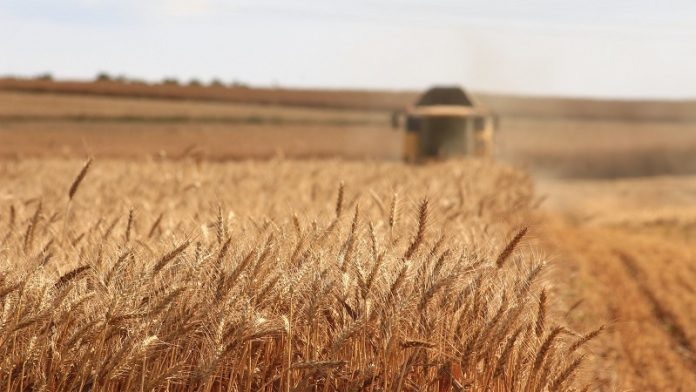
As the war in Ukraine marches into its fourth week, a bleak sort of accounting is underway:
So far, more than 900 civilians have been killed, and more than 1,400 injured, according to the Office of the UN High Commissioner for Human Rights.
But soon, the war may exact a far broader toll, as countries that rely upon Eastern Europe’s “breadbasket” face a grain and wheat shortage that may spell widespread famine.
Together, Russia and Ukraine account for 30 percent of the world’s exported wheat, and the Agricultural Market Information System—an international group focusing on global food-policy initiatives—estimates that 25 countries source at least half of their supplies from the two countries.
Meanwhile, grain exports from the war-torn region have largely stalled, as shipping ports have closed, farmland has been ruined, and farmers have been conscripted into service.
All of this comes on the eve of the planting season that sets the stage for next year’s wheat harvest.
In the United States, the shortage will mean higher prices for bread and cereal, says Christopher Bosso, professor of public policy at Northeastern, because the country is among the world’s main grain producers already and supplies much of its own demand.
The jump in price is more tied to rising fuel and shipping costs than production costs.
But elsewhere, the effects may be much more dire.
“I worry about the impact on parts of the world where Ukraine and Russia are much bigger sources of food, particularly in Middle Eastern and North African countries,” says Bosso, who studies food systems and public policy.
“Lots of these countries subsidize staples such as bread, and if they can’t afford to, they may stop subsidizing altogether.”
Late last week, the United Nations warned that Russia’s invasion of Ukraine could trigger global famine, particularly in countries such as Yemen, Ethiopia, and Russia.
Rising food prices in these countries, coupled with existing political and social turmoil, may also mean greater instability, Bosso says.
“In many ways, the rise in wheat prices in 2009 is what led to instability that created the so-called Arab Spring,” he says, referring to a series of anti-government protests, uprisings, and rebellions that spread among much of the Arab world in the early 2010s.
“I expect we might see major spikes in food insecurity, hunger, and political instability,” as a result of the grain shortage, Bosso adds.
The timing almost couldn’t be worse. April and May are major planting seasons for spring wheat, corn, and soy. Prolonged war in the region will mean that not only next year’s crops, but possibly several years’ harvests hence, are in question.
Though there are other major agricultural regions in the world—the farm belt in the U.S., major soy fields in Brazil—it’s unlikely that farmers would be able to cover the losses.
For one thing, Bosso says, it may simply be too late in the season to switch crops. Most farmers plan years in advance to buy (or save) the seeds they’ll need.
“If you have 10,000 acres of soy in Brazil, you’re not going to switch to having wheat automatically,” he says.
For another, not all climates can support crop substitution, and taking a chance on an unfamiliar crop is a big risk for farmers whose margins are generally very tight to begin with.
This all means that the grain shortages on the horizon now may be around for years to come, Bosso says.
“Even if the war is resolved fairly quickly, it may still be several years of having very tight commodity supplies,” he says.
“For some parts of the world, that could be catastrophic. If the past is any indication, when you have tight food supplies—you have hiccups in a system that’s become so finely tuned over the years—the situation serves to exacerbate existing problems of food insecurity, hunger, and instability.”
Written by Molly Callahan.



